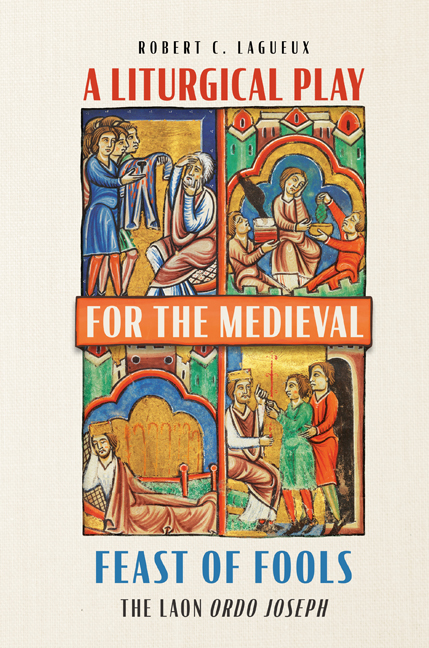1 - The Ordo Joseph in Context
Published online by Cambridge University Press: 17 December 2023
Summary
THE MANUSCRIPT SOURCE: LAON 263
Most of what we know about the twelfth-century celebration of the Feast of Fools at Laon comes from a single source, Laon, Biblio¬thèque municipale, MS 263, which Félix Ravaisson dated to the thirteenth century in his 1849 library catalogue. Perhaps following Ravaisson, Karl Young dated the source similarly, as did Jacques Handschin in 1948. Handschin subsequently allowed that the manuscript might be from the late twelfth century, an assessment with which Husmann and Arlt largely agreed. Writing a year after Arlt, David Hughes observes that “both script and notation suggest the 12th century.” Furthermore, he notes that there are two scribal hands present in the main body of the manuscript, the less prominent of which appears in four places: alone on fols. 51–51v; the three bifolia of fols. 85–90v; the entire inserted gathering of fols. 114–121v; and combined with the primary hand in the sequence Laudes crucis on fols. 51–52. The inserted gathering (fols. 114r–121v), which contains the office of Thomas of Canterbury, must date from after 1172 (the date of his canon¬ization), and Hughes presumes that the other occurrences of the hand date from after 1172 as well. Given the appearance of both hands in Laudes crucis, Hughes concludes that the entire manuscript was likely copied in the last quarter of the twelfth century.5
The 189 folios of Laon 263, the first twenty of which were a later addi¬tion, contain special music and liturgy for nearly all of the liturgical year. Christmastide is well represented, but Christmas itself and Easter and the Triduum do not appear; their liturgies were likely recorded in another source or sources that have not survived. The manuscript was clearly created with the intention of assembling all of the material that the cathedral chapter might use to elaborate the liturgy. Such optional additions include small-scale embellishments, such as text and music added to a Kyrie eleison or a textual underlay added to a long melisma, but also large-scale items, such as sequences introduced into hours of the Divine Office or entire dramas such as the Ordo Joseph.
Information
- Type
- Chapter
- Information
- A Liturgical Play for the Medieval Feast of FoolsThe Laon <i> Ordo Joseph</i>, pp. 19 - 40Publisher: Boydell & BrewerPrint publication year: 2023
